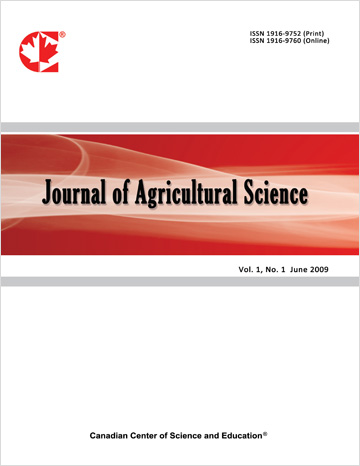Biodegradation of Antinutritional Factors in Whole Leaves of Enterolobium cyclocarpum by Aspergillus niger Using Solid State Fermentation
- A. Ayuk
- E. Iyayi
- B. Okon
- J. Ayuk
- E. Jang
Abstract
In the tropics, native pastures and crop residues constitute the major feed resources for ruminants. There are available seasonally and of low quality. They contribute to the limitation of ruminant production which is predominantly managed by small holders. Enterolobium cyclocarpum (EC) is a hardy multipurpose tree (MPT) that has potential as supplement for ruminant feeding. However, anti nutritional factors (ANFs) contained in the leaves of EC could have negative effects on its nutritive value. Fungal biodegradation by solid substrate fermentation (SSF) of four ANFs namely: tannin, saponin, phytic acid and oxalate in leaves of EC was investigated. Aspergillus niger was used to inoculate whole leave samples of the EC. The levels of ANFs in the leaf substrates were estimated after 0, 7, 14, 21 and 28 days. Inoculation of the whole leaf samples of the EC with A. niger caused reductions in the ANFs. Percentage reduction in EC was 42.7%, 28.7%, 25.5%, and 26.5% for tannins, saponins, phytic and oxalate respectively. At the same time, it significantly (p<0.05) increased crude protein levels in the leaves of EC up to day 14 beyond which there was no further significant increase. The results of ether extract, acid detergent fibre and neutral detergent fibre (NDF) showed decrease as period of fermentation increased. It could be concluded from this study that the solid state fermentation of whole leaves of E. cyclocarpum by A. niger was sufficient to degrade antinutritional factors and caused significant improvement in the substrate nutrient composition. The reduction in antinutritional factors: tannins, saponins, phytic acid and oxalate, protein enrichment and simultaneous degradation of fibrous fractions (ADF and NDF) and ether extract showed the importance of fungal fermentation in improving the nutritive value of MPTs.
- Full Text:
 PDF
PDF
- DOI:10.5539/jas.v6n10p188
Journal Metrics
- h-index: 67
- i10-index: 839
- WJCI (2023): 0.884
- WJCI Impact Factor (2023): 0.196
Index
- AGRICOLA
- AGRIS
- BASE (Bielefeld Academic Search Engine)
- Berkeley Library
- CAB Abstracts
- ChronosHub
- CiteSeerx
- CNKI Scholar
- Copyright Clearance Center
- CrossRef
- DESY Publication Database
- DTU Library
- e-Library
- EBSCOhost
- EconPapers
- Elektronische Zeitschriftenbibliothek (EZB)
- EuroPub Database
- Excellence in Research for Australia (ERA)
- Google Scholar
- Harvard Library
- IDEAS
- iDiscover
- Jisc Library Hub Discover
- JournalTOCs
- KindCongress
- LIVIVO (ZB MED)
- LOCKSS
- Max Planck Institutes
- Mendeley
- MIAR
- Mir@bel
- NLM Catalog PubMed
- Norwegian Centre for Research Data (NSD)
- Open J-Gate
- OUCI
- PKP Open Archives Harvester
- Polska Bibliografia Naukowa
- Qualis/CAPES
- RefSeek
- RePEc
- ROAD
- ScienceOpen
- Scilit
- SCiNiTO
- Semantic Scholar
- SHERPA/RoMEO
- Southwest-German Union Catalogue
- Standard Periodical Directory
- Stanford Libraries
- SUDOC
- Swisscovery
- Technische Informationsbibliothek (TIB)
- Trove
- UCR Library
- Ulrich's
- UniCat
- Universe Digital Library
- WorldCat
- WRLC Catalog
- Zeitschriften Daten Bank (ZDB)
Contact
- Anne BrownEditorial Assistant
- jas@ccsenet.org
